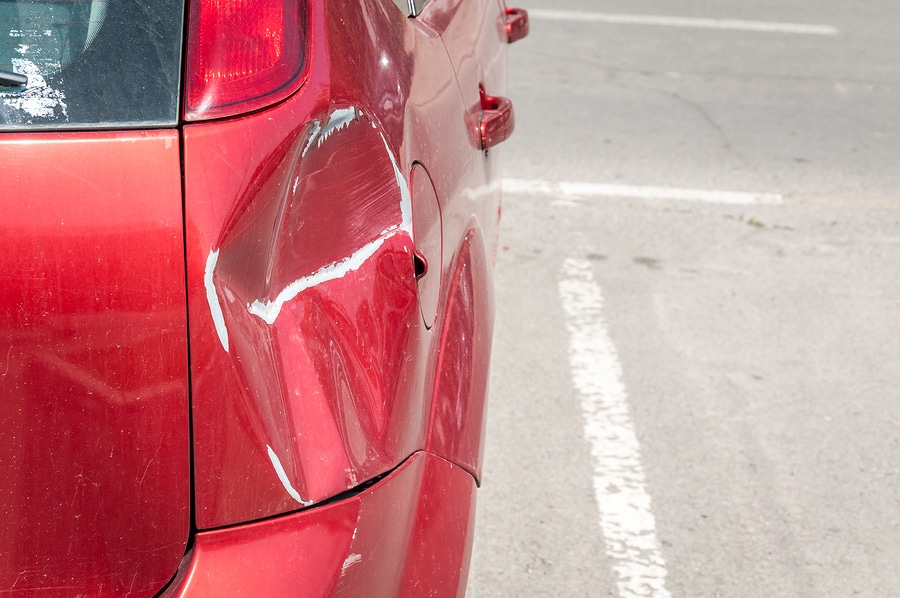The statistics say one in every five car accidents takes place in a parking lot, making it the most likely place to experience an accident. Unfortunately, it can be tough to determine fault in a parking lot accident. No matter what, there are a few steps you must take in the event of an accident, including taking photos of the scene, exchanging information and possible calling the police. Depending on the severity, you can decide to handle the situation outside of insurance but there are major risks. Here are some guidelines on how to handle a parking lot car accident.
Through lanes and Feeder lanes
There are usually two types of lanes in a parking lot, called through lanes and feeder lanes. Through lanes are the main paths, such as the lane right in front of the business or in the back of the parking lot and around the edges of the property. Feeder lanes are the paths that typically lead directly to parking spaces. In a parking lot accident, the through lane drivers are considered to have the right of way, so if you make contact from a feeder lane, you will be seen at fault.
Hitting an Empty Vehicle
A common way that parking lot accidents occur is a simple bump to a parked car. This would put you at fault. A lot of times, the owner of the car is not around and there’s no telling when they will return to their vehicle. In cases like this, it is best to leave your contact information on a note. According to the law, if you make contact with another vehicle and drive off, even if the other car was empty, it is considered a hit-and-run accident. This can lead to much higher fees and possibly jail time.
Hitting an Occupied Vehicle
Making contact with another vehicle while both are moving is also fairly common in parking lots. A lot of times, these accidents occur when someone is backing out of a parking space and another driver passes by. When a car is backing out of a space and causes an accident, they are at fault for not safely entering the feeder lane.
As with any accident, there is a certain order of steps that should be followed. First, see if everyone in both vehicles are okay. If someone is injured, you may need to call for an ambulance. Second, do not move the vehicles unless necessary. It is best to keep things right where they are for documentation of the incident and determining fault.
Third, take pictures of everything. Photograph the damage on both vehicles, no matter how small, just to be safe. Also take long view pictures of the larger scene. These images provide context to the situation for the insurance companies and the police to determine fault. Fourth, swap insurance and contact information with the other driver. Be sure to provide name, contact information, and car insurance information.
Filing an Insurance Claim
Sometimes a parking lot accident is very minor, with no injuries and barely any damage. In these cases, both parties can decide to not file a claim and instead just handle the bills themselves. They can decide to cover their own damage or cover each other’s damages.
However, there are risks. If the other driver is truly at fault, you don’t gain anything from covering your own costs and leaving insurance out of it. Also, many people worry about their insurance rates going up due to an accident, but most insurers promise not to raise rates for accidents under a certain cost, usually around $500 to $1,000 worth of damage.
Most of all, just because a hand shake deal was made between both parties doesn’t mean that one can’t file a claim anyway, making things even more costly. It is best to just file a claim with insurance.
Staying Safe in a Parking Lot
Do what you can to avoid parking lot accidents. While they are not too complicated, and they are very similar to road accidents, these situations can be a headache to handle. Insurance claims, police reports and repairs can take weeks or months of phone calls and repair shop visits before everything is fixed.
Always be sure to follow the rules of the parking lot. Remember that through lanes have priority over feeder lanes which have priority over parking spaces. Watch out for other cars everywhere, in case some drivers ignore the lines. When possible, pull forward out of your parking space rather than backing up. The more precaution taken, the less chance there is of having a parking lot accident.

